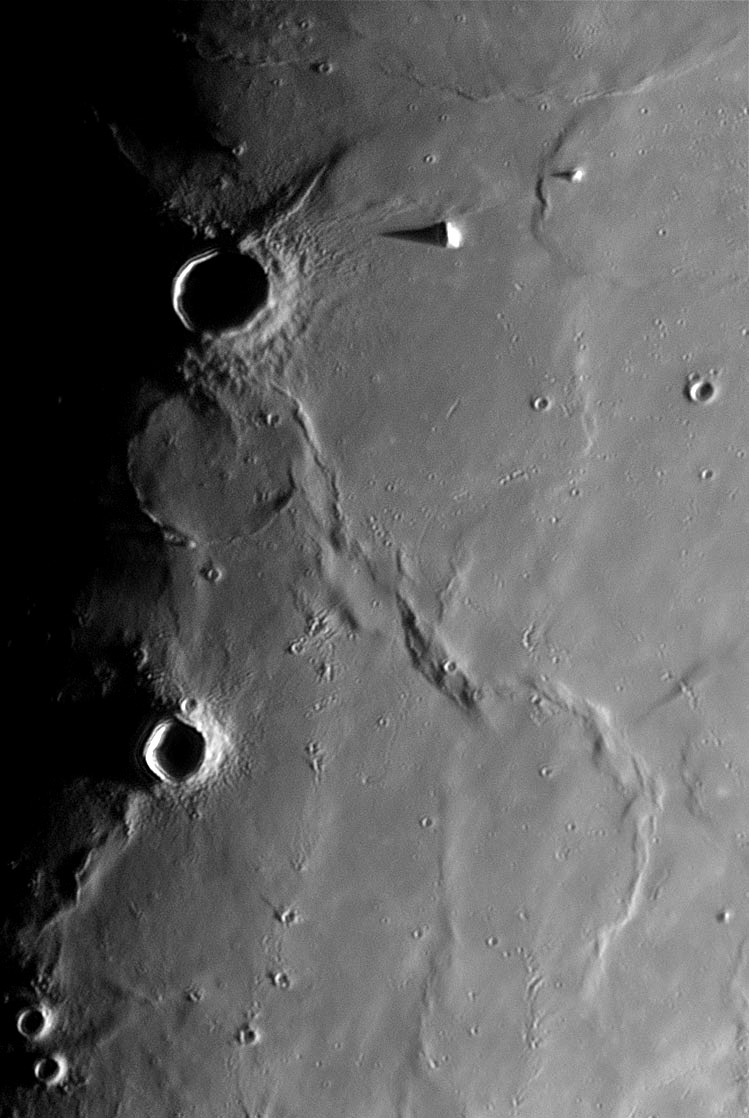LPOD Jan 12, 2008
TINY EVIDENCES FOR IMPACT AND VOLCANISM

image by Jérôme Grenier, Paris, France
Mare Imbrium has few conspicuous features to distract from the glories - Plato, Alpine Valley, etc - around its edges. But every image reveals some features of interest, and in Jérôme's the first is the well-known ghost crater Lambert R (R for ruin) near top left. Below that, and stretching nearly to the bottom of the frame, are 8 or more small craters with disturbed surfaces on their north sides. These are secondary craters from Copernicus, and each large secondary and its down-range debris is also a ray splash - look under a higher Sun. We know how rays form, from the ejection of low speed clumps of rock during a primary impact, but it is not certain why rays are spaced apart in a line, rather than being isolated pits at all azimuths around a primary crater. It may be that a single piece of rock is fragmented, excavated and ejected, with its individual subpieces carried near or far depending on the velocity of each. Moving slightly to the east/right of the north end of these ray craters is a very delicate sinuous rille. This unnamed rille is shown on Apollo 17 Metric photographs but is rarely seen on terrestrial images. North of the rille is an 8 km long wide trough – this is also seen on an Apollo 15 Pan photograph. I get an impression that this is a vent for a wide, but very shallow dome. An image taken a little before Jérôme's is needed to check this hunch.
Chuck Wood
Technical Details:
18 December 2007. Dmk31 AF03, Orion Optics (UK) OMC 12" + barlow 2x + red filter.
Related Links:
Rükl plate 20
Jérôme's website.